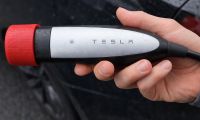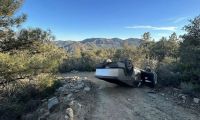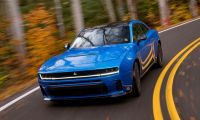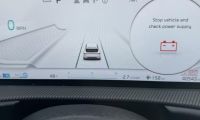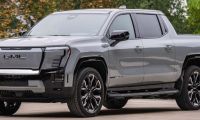Edmunds' first 5000 miles of Lucid Air ownership has been a mixed bag of delights and troubles, with the research and testing organization discovering that Lucid still has some way to go if it's to provide build quality to take on its self-proclaimed main competitor: the Mercedes S-Class.
The Lucid Air Grand Touring is the most expensive car to join the Edmunds long-term test fleet with a total price of $140,500. For that kind of money expectations tend to be high and the Lucid has delivered on some, but not all, of these. The Air GT's speed is unquestionable as is its ability to turn heads on the street, but areas like in-car tech have left the testers wanting.
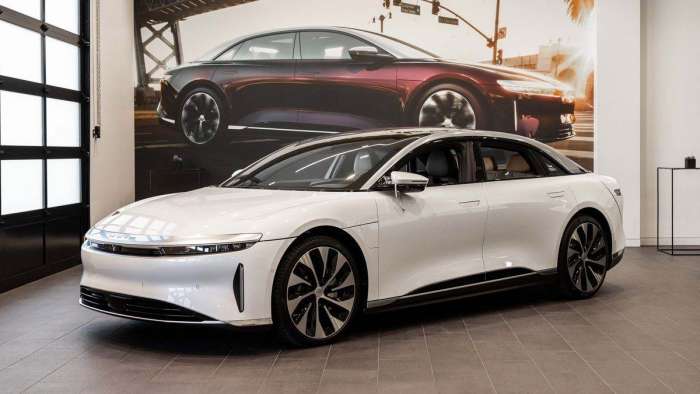
The Good
The Air's power and interior space impressed the Edmunds staff with "seemingly endless" space inside for passengers and cargo. The ability to create different driver profiles with associated settings was also praised in the initial report, though the testers would like to be able to switch profiles while on the move which currently isn't allowed. Interior materials like open-pore wood and soft faux leather make the GT's cabin a pleasant place to spend time.
The frequency with which OTA updates come in shows that Lucid is constantly working to improve its flagship sedan, though the staff found the sheer number of them slightly shocking with more than 30 updates sent out in the relatively short time the company has owned the vehicle.
Charging speed is among the highest of any EV Edmunds has tested and the simplicity of using Electrify America stations (three years free charging included) also draws praise. The companies call the Lucid Air one of the best EVs available for long-distance road-tripping.
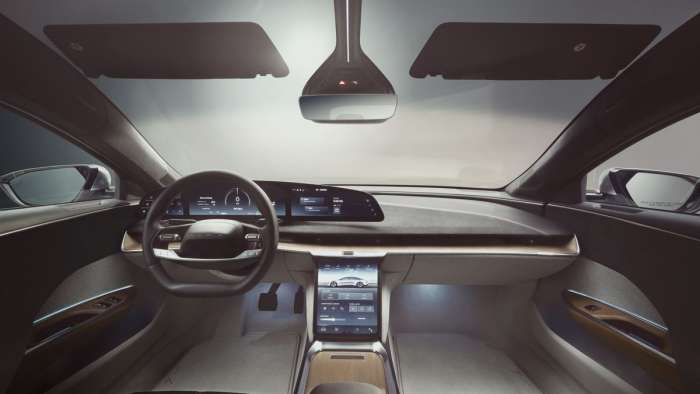
The Bad
The Lucid's in-car tech was a major area that drew criticism from the Edmunds team with the touchscreen and blind spot cameras proving slow to respond to inputs. The latter were apparently so laggy that lane changes had sometimes been completed by the time the cameras came on. There were also occasional creaks from the trim and weather stripping on the exterior that seemed soon to part company with the vehicle.
One member of the Edmunds team was locked out of the Air for a few hours because of a dead battery in the key fob and being parked in a cell service dead spot. We're all for exciting futuristic cars but if it doesn't work properly without an internet connection then something's wrong. The driver's door handle broke soon after that episode, though the staff were able to use "some finagling" to open and close the door on their $140K luxury sedan.
Finally, real-world range seemed to be lacking with their best distance between charges coming in at 438 miles against the quoted 516.
This is just the beginning for Edmunds' long-term Lucid and there's a lot of room for improvement. Remember how long Tesla struggled with build quality? OTA updates can fix a laggy infotainment system, but it seems like Lucid's QA department needs more attention.
Related Story: Lucid Wins Newsweek Powertrain of the Year Award
Images by Lucid Motors licensed by CC BY 4.0.
James Walker is an Automotive Journalist at Torque News focusing on Lucid Motors. If it's got wheels he's interested, and he's looking forward to seeing what kind of cars the EV revolution brings us. Whether it's fast, slow, new, or old, James wants to have a look around it and share it in print and on video, ideally with some twisty roads involved. You can connect with James on Twitter, Instagram, and LinkedIn.








